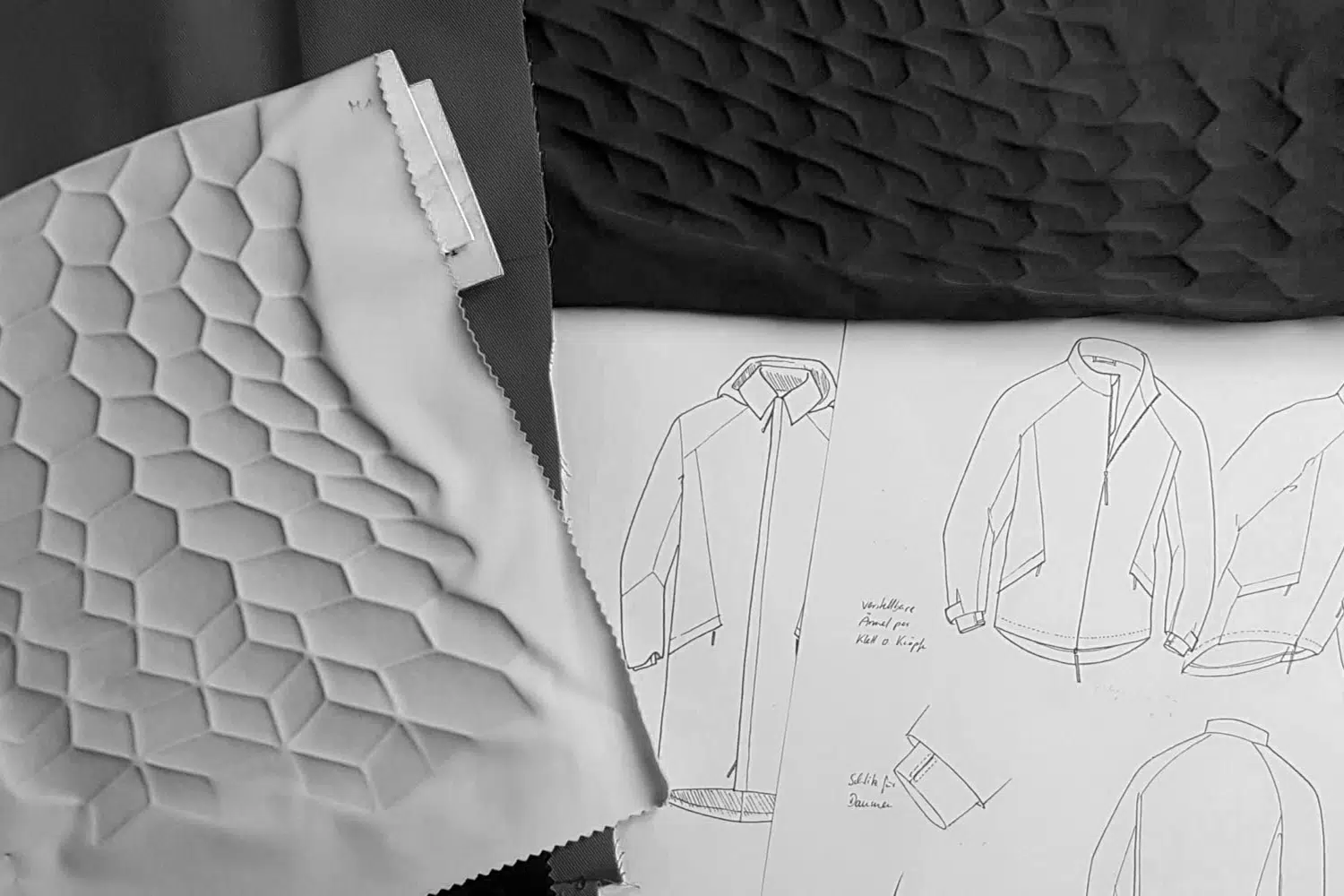GRDXKN (pronounced GRIDSKIN) is a 4D printing solution offered by Bastian Müller, based in Munich, Germany. It is a functional textile printing technology that is lightweight and highly flexible. The integrated, volume-forming material is test-proven to be abrasion-resistant and shock-absorbent – creating a novel interplay between graphics and structure and a balance between design and function.
The GRDXKN printing technology transforms substrates into smart textiles. This interconnected combination of materials creates new areas of application for textiles. The technology, in combination with the special printing pastes, makes it possible to provide a variety of textiles options such as cotton, polyester, and nylon. As well as blended fabrics such as aramid cotton with additional, technical features.
“With GRDXKN I design a new typology of functional and unique textile products,” said Bastian Müller.

Manufacturing on Demand
Through his product offering, Bastian Müller advises on everything to do with GRDXKN – the aesthetics, printing pastes, textile, etc. The structures are infinitely variable, enabling a unique aesthetic with every project.

The flexible and expandable textile printing technology only works with the inclusion of the appropriate water-based and solvent-free printing pastes and is available to the B2B market.
The GRDXKN structure printing technology is: stabilizing (thanks to partially soft textiles with special support architecture, thus, specifically stiffening these tear-resistant and/or stretchable textiles), lightweight (due to the foamed material composition), shock-absorbing (through the use of protectors printed into existing functional clothing), sound-refracting (improving the acoustic properties of fabrics in terms of sound insulation: acoustic attenuation or improvement of sound through modified textile surfaces), certifiable, insulating, washable (at 60 degrees, depending on the textile), aerodynamic (creating a concave surface structure suited for cycling, skiing, skating, etc), abrasion-resistant (offering skin protection through the combination of multiple materials), flame retardant (thanks to the combination of the printing pastes), and ventilating (due to the cavities created by the variable shape and depth). The technology is also available in multiple color options and creates no waste through the production of the textiles.
* This article is reprinted from 3D Printing Media Network. If you are involved in infringement, please contact us to delete it.
Author: Edward Wakefield


Leave A Comment